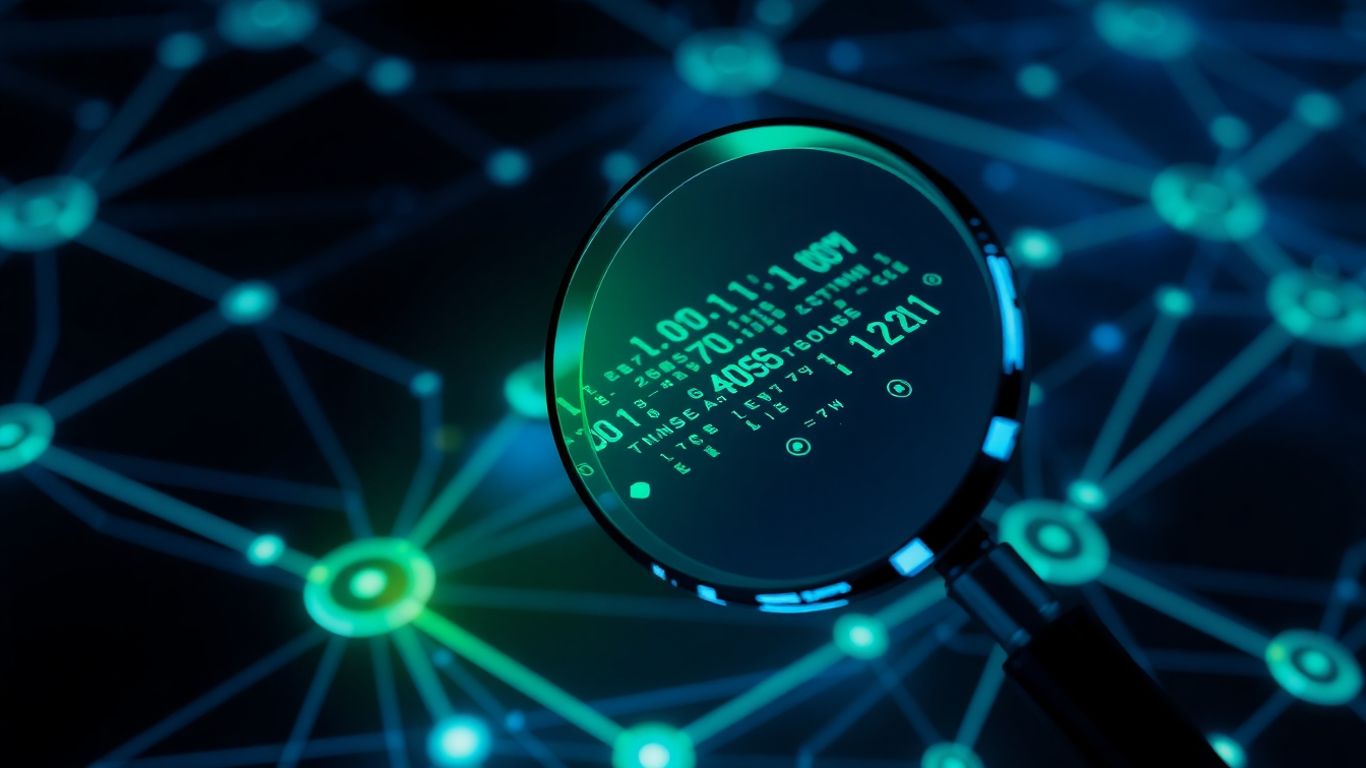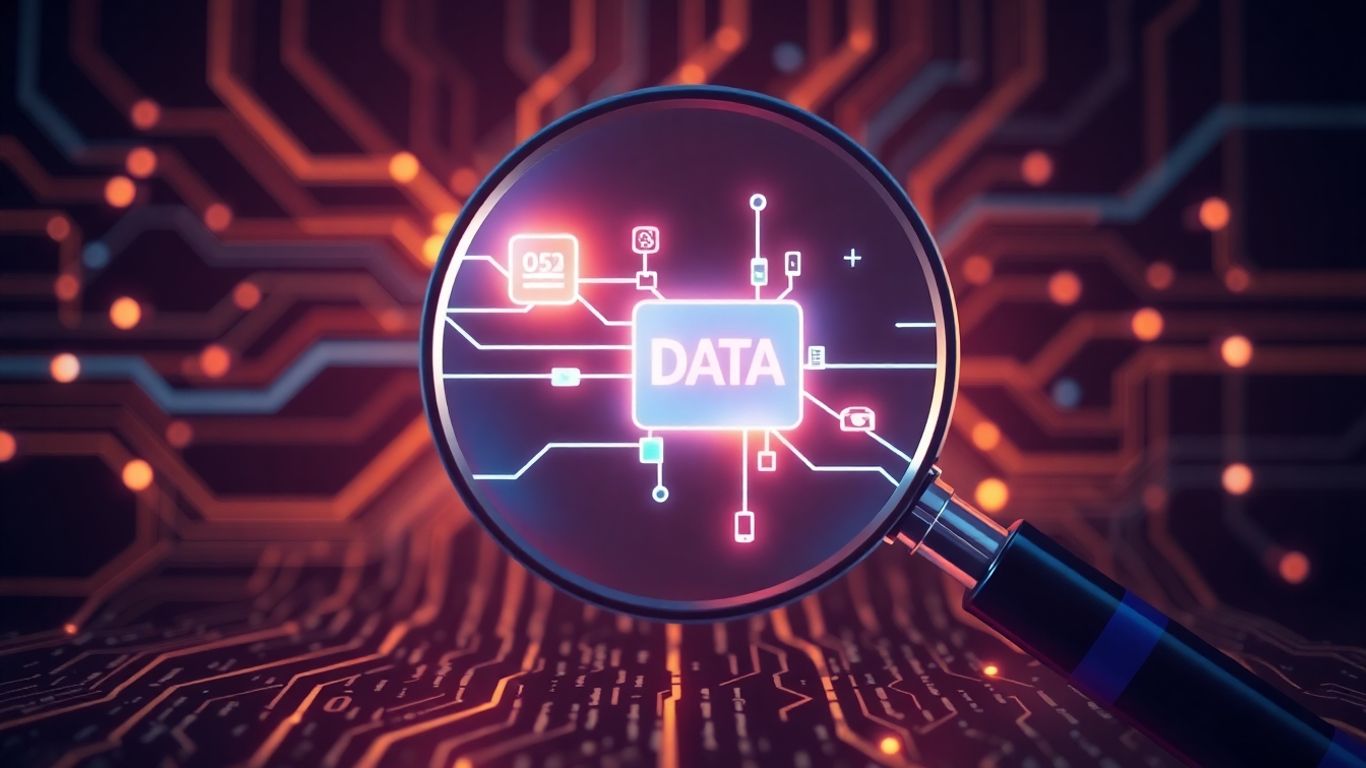[ newsletter ]
Stay ahead of Web3 threats—subscribe to our newsletter for the latest in blockchain security insights and updates.
Thank you! Your submission has been received!
Oops! Something went wrong. Please try again.
Explore the 'sniffer website': a comprehensive guide covering its operation, tools, malicious uses, and ethical considerations. Learn how sniffer websites work and how to protect yourself.





You’ve probably heard the term 'sniffer website' thrown around, and maybe you're wondering what it actually is. It sounds a bit technical, right? Well, think of it like this: a sniffer website is basically a tool that can peek at the data traveling across a computer network. It’s like eavesdropping on conversations, but for internet traffic. This guide will break down what these sniffers are all about, how they work, and why you should know about them, whether you're just curious or trying to keep your own digital space safe.
A "sniffer website," in the context of cybersecurity, refers to a malicious web page or script designed to intercept and steal data transmitted over a network. Think of it like a digital eavesdropper. These sites often masquerade as legitimate pages, especially during online transactions, to trick users into revealing sensitive information. The primary goal is to capture data that isn't properly encrypted. This can include login credentials, credit card numbers, personal details, and other confidential information. They exploit vulnerabilities in how data is sent between your device and the website you're interacting with.
Sniffer websites work by injecting malicious code, often JavaScript, into a webpage. When a user visits this compromised page, the script activates. It then monitors the network traffic originating from the user's browser. This traffic can include form submissions, data entered into fields, and even information passed between different parts of a website. The sniffer script collects this data and then sends it back to the attacker, often to a remote server controlled by them. This process can happen very quickly, sometimes before the user even realizes anything is wrong.
Here's a simplified look at the process:
It's important to understand that sniffers don't necessarily need to be on a website you're actively visiting. Sometimes, they can be embedded in advertisements or other third-party content that loads on otherwise legitimate sites. This makes them particularly sneaky.
Packet analysis is the core technique behind how sniffers work and how security professionals detect them. Network traffic is broken down into small units called packets. Each packet contains a piece of data along with information about its origin, destination, and the protocol it's using. Sniffer scripts analyze these packets to find specific types of information, like credit card numbers formatted in a certain way or login credentials. Security tools, on the other hand, use packet analysis to monitor network traffic for suspicious patterns, unusual data flows, or known malicious signatures. By examining packet contents and headers, analysts can identify if data is being intercepted or sent to unauthorized locations.

So, you want to peek under the hood of your network traffic? That's where network sniffing tools come in. Think of them as your digital binoculars for observing data packets zipping around. They're not just for security folks, either; network admins use them all the time to figure out what's going on.
These are the heavy hitters, the programs that actually grab the data packets and let you look at them. They're pretty sophisticated and can show you a ton of detail. You can see things like where the data came from, where it's going, and what kind of information it contains. This level of detail is what makes them so powerful for troubleshooting network issues or spotting suspicious activity.
Some popular options include:
While graphical tools are great, sometimes you just need something quick and dirty from the command line. These utilities are often built into operating systems or are very lightweight.
grep but for network packets. It lets you search for specific patterns within the packet payloads, which can be super handy for finding particular types of data or strings.Before you can sniff traffic effectively, you often need to know what devices are even on your network. That's where network mapping and discovery tools come in. They help you build a picture of your network landscape.
Using these tools requires a good understanding of network protocols. Without it, the data you capture might just look like a jumbled mess. It's like having a dictionary in a language you don't speak – the words are there, but the meaning is lost. So, brushing up on TCP/IP, HTTP, and other common protocols is a really good idea before you dive too deep.
These tools, when used correctly, give you a clear view of what's happening on your network, helping you keep things running smoothly and securely.

Sniffer toolkits are packed with features that let them do more than just grab data off the wire. They're built to make sense of that data, too. Think of it like a detective's toolkit – you need the magnifying glass, but you also need the fingerprint kit and the notebook to record everything.
These tools can break down the different languages computers use to talk to each other. They don't just see "data"; they see "this is an HTTP request" or "this is a DNS query." This is super important because different protocols have different security implications. For example, seeing unencrypted HTTP traffic means passwords and sensitive info could be floating around in plain text. They can usually handle the common ones like TCP, UDP, ICMP, and HTTP, but more advanced ones can dig into things like SMB or even encrypted protocols if you have the keys.
Network traffic can be a real flood. You can't possibly look at every single packet. That's where filtering comes in. You can tell the sniffer to only show you traffic from a specific IP address, or only traffic using a certain port, like port 80 for web traffic. This helps you zero in on what you're looking for. Once you've filtered down to the packets you care about, session reconstruction is like putting together a puzzle. It takes all those individual packets and stitches them back into a coherent conversation between two devices. This lets you see the whole exchange, not just bits and pieces.
Beyond just security, sniffers can also tell you how well your network is running. They can measure things like:
This kind of info is gold for figuring out why your internet is slow or why a certain application isn't performing well. It helps pinpoint bottlenecks.
Sometimes, the sheer volume of data captured by a sniffer can be overwhelming. Effective use relies heavily on knowing what you're looking for and how to narrow down the results. Without proper filtering and analysis techniques, you might just end up with a massive log file that's impossible to interpret.
Here's a quick look at what some of these features help achieve:
It's pretty wild how tools designed for network analysis can be twisted for some seriously shady purposes. When we talk about "sniffer websites," we're often looking at how bad actors use them to grab sensitive information. Think of it like a digital eavesdropper, but instead of listening in on conversations, it's siphoning off data from online transactions or personal accounts.
This is a big one. Attackers can inject malicious scripts, often called sniffers, into e-commerce sites. These scripts sit quietly in the background, waiting for customers to enter their credit card details during checkout. Once the information is typed in, the sniffer grabs it and sends it off to the attacker. It's sneaky because the customer usually has no idea anything is wrong until their card is used fraudulently. The whole process is designed to look legitimate from the user's perspective.
Beyond just financial data, sniffers can be used to steal all sorts of personal information. This could include names, addresses, social security numbers, login credentials, and more. Imagine a compromised login page for a popular service; a sniffer there could grab usernames and passwords, giving attackers access to email accounts, social media, or even banking portals. This kind of information is gold for identity theft and further attacks.
Some of these sniffer tools are becoming quite sophisticated, almost like "Sniffer-as-a-Service" platforms. They offer ready-made kits that make it easier for less technical criminals to launch attacks. These kits often come with features to help attackers:
The danger with these automated tools is that they lower the barrier to entry for cybercrime. What used to require deep technical knowledge can now be done with a pre-packaged solution, leading to a wider range of threats and a faster pace of attacks. It's a constant cat-and-mouse game between those creating these tools and those trying to defend against them.
These tools can be sold on dark web forums, with prices varying. For instance, a toolkit might initially be offered for a few hundred dollars, but later versions with more advanced features could fetch thousands. This commercialization means more attackers have access to powerful sniffing capabilities, making network security a more challenging task for businesses and individuals alike.
Sniffer tools aren't static; they're always getting new tricks. Think about it, if they didn't change, security folks would figure them out pretty fast. We've seen updates that add things like "extractors," which are basically tools to pull out specific bits of data more easily. Some versions have gotten better at bypassing security measures, like Cross-Origin Resource Sharing (CORS) bypasses, making them sneakier. It's like a constant arms race between the people making these tools and the people trying to stop them.
One of the big areas of development is making sniffers harder to detect. This means making the malicious code look like regular traffic or hiding where the attacker is actually controlling things from. Newer versions are really good at completely hiding malicious scripts and making the URLs for their command and control (C&C) servers look like innocent website addresses. This makes it much tougher for network defenses to spot what's going on.
Beyond just sniffing network traffic, some sniffers have started incorporating keylogging features. This means they can also record what you type on your keyboard. This is a pretty significant addition because it allows attackers to grab not just data that's sent over the network, but also sensitive information like passwords or personal messages typed directly into a compromised system. It's a way to get even more information with a single tool.
Here's a look at some recent updates:
The constant evolution of sniffer technology means that security measures need to adapt just as quickly. Features like advanced obfuscation and integrated keylogging highlight the increasing sophistication of these tools, making detection and prevention a continuous challenge for network administrators and security professionals.
Using network sniffing tools, including those that might be called 'sniffer websites,' comes with a big responsibility. It's not just about knowing how to capture data; it's about knowing when and why you should, and more importantly, when you absolutely shouldn't. Unauthorized access to any network or data is illegal and unethical, plain and simple.
Getting caught snooping where you're not supposed to can lead to some serious trouble. Depending on where you are and what you've done, you could face hefty fines, or even jail time. Laws like the Computer Fraud and Abuse Act (CFAA) in the US, and similar legislation globally, are in place to protect digital privacy and security. Think of it like trespassing, but in the digital world. It's a good idea to know the laws in your area before you even think about running a sniffer on a network that isn't yours.
Tools like Pwnagotchi, which use AI to learn about Wi-Fi networks, are fantastic for learning. They can help you see how secure your own Wi-Fi is by trying to capture handshakes. It's a bit like having a digital pet that learns about Wi-Fi security. However, even with these educational tools, the same rules apply. You should only ever use Pwnagotchi on networks you own or have explicit permission to test. It's a learning device, not a tool for unauthorized access.
Here's a quick rundown of responsible use:
Knowing how sniffers work is half the battle in protecting yourself. The other half is putting up defenses. Here are a few ways to make your network less of a target:
The digital world offers incredible opportunities, but it also presents risks. Understanding how tools like network sniffers work is important for both security professionals and everyday users. However, this knowledge must be paired with a strong ethical compass and a commitment to legal and responsible behavior. Using these powerful tools without authorization is not only a violation of trust but also carries significant legal consequences. Always prioritize ethical conduct and legal compliance when dealing with network security tools.
So, we've gone over what these sniffer tools are all about, and honestly, it's a bit of a mixed bag. On one hand, they're super useful for network folks trying to keep things running smoothly and spot problems. But then you've got the other side, where bad actors use them to snatch up sensitive info, like credit card details, right off e-commerce sites. It's pretty sneaky how they hide their tracks, making it tough for regular people to even tell if a site is safe for shopping. For businesses, especially online stores, it's really important to keep a close eye on payment pages and anything connected to them. Staying on top of security updates and maybe even getting some expert help can make a big difference in staying safe from these kinds of threats.
A 'sniffer website,' or more accurately, a sniffer tool, is like a digital eavesdropper. It's designed to secretly watch and record the information that travels across a computer network. Think of it like listening in on conversations happening between computers.
These tools work by capturing 'packets,' which are tiny bundles of data sent over the internet. They examine these packets to see what information is inside, like website addresses, login details, or other sensitive data. It's like picking up and reading every single postcard that's sent through a mail system.
Unfortunately, yes. Bad actors can use sniffers to steal important personal information, like credit card numbers or passwords, especially if the network isn't secure. They might also use them to gather information to launch bigger cyberattacks.
Some well-known tools include Wireshark, which is like a powerful magnifying glass for network traffic, and Nmap, used for exploring and mapping out networks. Command-line tools like tcpdump are also popular for quick checks.
Using secure, encrypted connections (like those with 'https' in the web address or a VPN) is very important. Keeping your software updated and being cautious about which networks you connect to also helps prevent your information from being snatched.
Hacking usually involves breaking into systems or networks to gain unauthorized access or cause damage. Sniffing, on the other hand, is more about passively collecting data that's already being transmitted. However, sniffing can be a step used in a hacking attempt to gather information.


